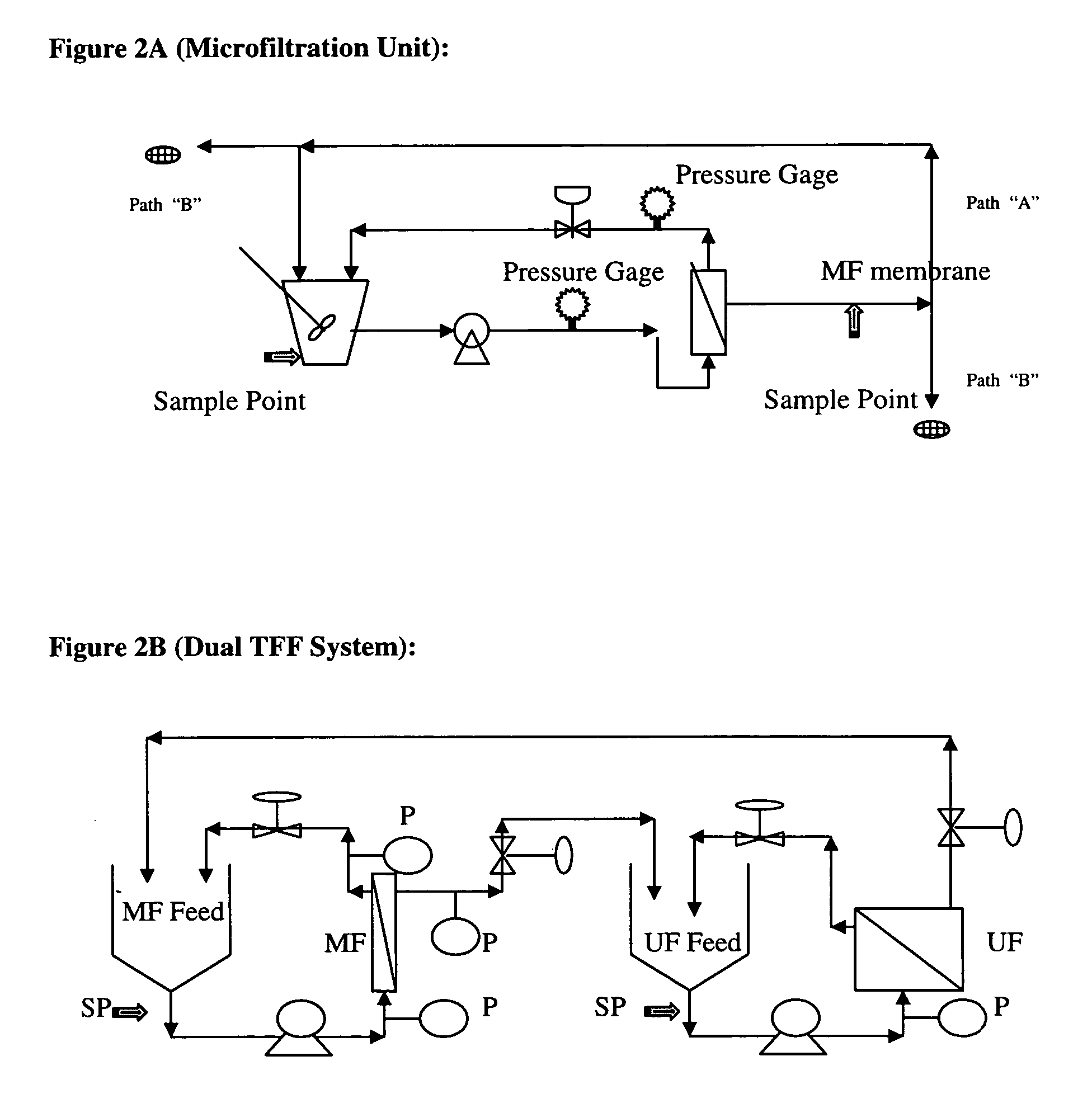Methods of tangential flow filtration and an apparatus therefore
a flow filtration and flow filtration technology, applied in biochemistry apparatus and processes, sugar derivatives, peptide preparation methods, etc., can solve the problems of difficult to implement commercial operations, and difficult to meet product requirements, so as to improve the purity, reduce the volume of the resulting product composition, and optimize the effect of down stream purification
- Summary
- Abstract
- Description
- Claims
- Application Information
AI Technical Summary
Benefits of technology
Problems solved by technology
Method used
Image
Examples
example 1
Milk as a Feedstream for the Production of a Molecule of Interest
[0066] The data below provides an application of the current invention that provides a membrane-based process to clarify, concentrate, and fractionate transgenically produced an IgG1 antibody from a raw milk feedstream. According to this example of the invention the transgenic mammal providing the milk for processing was a goat but other mammals may also be used including cattle, rabbits, mice as well sheep and pigs. Initial operational parameter ranges for processing were optimized utilizing CHO-cell produced IgG1 antibodies spiked into non-transgenic goat milk. When a transgenic goat capable of producing this molecule of interest came into lactation and began producing recombinant IgG1 antibodies in its milk, the several experiments were performed using CHO-cell produced recombinant IgG1 antibodies spiked into non-transgenic milk and were repeated with transgenic milk.
[0067] Pursuant to the current invention the ex...
process experiment
Dual Process Experiment
[0123] To test the process parameters determined in previous experiments on dual TFF system to recover cell culture IgG1 antibody from non-transgenic milk. Non-transgenic milk was spiked with 2.4 g of cell culture IgG1 antibody for a total volume of 1000 ml and sample number 1 was taken. The spiked milk was placed in the feed reservoir of the microfiltation system and pumped across the membrane at 13.4 l / min. The temperature, pressures, permeate flow rates and volume were recorded at each subsequent time point. The system was adjusted to the following initial parameters:
Membrane Area:0.2sqftMembrane Pore Size:0.20umInitial Milk Vol.:1000mLTransmembrane Pressure14psigPermeate Pressure0psigConcentration1x
[0124] The permeate line of the MF was fed to the feed reservoir. At time equals 10 min the permeate was directed through path “B” (permeate to drain). Once the milk was 2× the original concentration or 500 ml, the permeate was switched back to path “A” (re-ci...
PUM
| Property | Measurement | Unit |
|---|---|---|
| Temperature | aaaaa | aaaaa |
| Temperature | aaaaa | aaaaa |
| Temperature | aaaaa | aaaaa |
Abstract
Description
Claims
Application Information
 Login to View More
Login to View More - R&D
- Intellectual Property
- Life Sciences
- Materials
- Tech Scout
- Unparalleled Data Quality
- Higher Quality Content
- 60% Fewer Hallucinations
Browse by: Latest US Patents, China's latest patents, Technical Efficacy Thesaurus, Application Domain, Technology Topic, Popular Technical Reports.
© 2025 PatSnap. All rights reserved.Legal|Privacy policy|Modern Slavery Act Transparency Statement|Sitemap|About US| Contact US: help@patsnap.com



